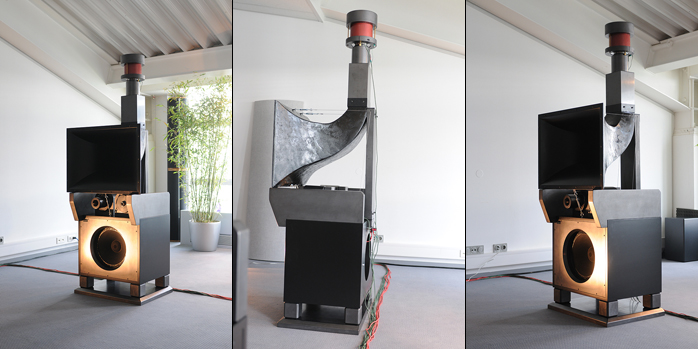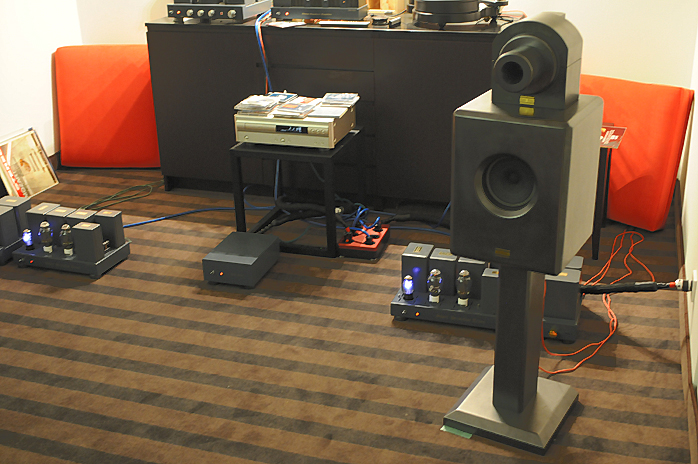GelbeMusik
Senior Member
- Joined
- Apr 19, 2020
- Messages
- 445
- Likes
- 290
And still there is absolutely no evidence for an impact of cabinet vibrations on sound quality.
I have used ...
English PDF, page 6 - Tecsound SY
http://www.texsa.com/en/files/doc60/folleto-tecsound-angl-low.pdf
The small loss of volume (was in a big 2-way + supertweeter loudspeaker -> two layers of Tecsound SY70) is compensated by fiberglass, I say.
I hold a small German patent on the use of similar tech within loudspeaker enclosures, not sacrificing precious volume, which makes it a bit special. This was born out of bad feelings. About people actually fantasizing huge impact of cabinet wall vibration of loudspeakers on sound quality. ( The effectiveness was proved. )
I only wanted to show, eventually, that there is no real (!) interest in addressing the topic. Because everybody in the industry knows, there is no problem. The use of massive measures only pleases the un-educated expectations of customers. Everybody would be able to feel, by touch, the vibrations. Make up a story about it, done. There is something that doesn't belong ...
From an engineering perspective: is it actually feasable to build loudspeakers using, what was it, 300 pounds of ( quite humble ) polyurethane? For everybody? As a standard? If it was recycled plastic like polyproylene, sound proof and rigid and ... we could place the garbage where it belongs.
Regarding the price, right, 150.000 dollars? For loudspeakers that "transport the feelings of" ( so the video )? People need 150.000$ so that feelings are transorted to them? Self evident that is, as satire.
People spending this sort of money want to choose their own amp.
Probably wrong and good actives have been available but suffering from this bias in the market for decades.
The Meridian M1 was offered in the 1970s but suffered from the same problem, as all their subsequent excellent speakers have.
Pro audio isn't a hobby so doesn't suffer the same illogical market.
Looks really impressive, but man, why didn't they go active??? $150,000/pair is essentially cost no object, so why not? Is it possible that the design is somehow improved by staying passive?
I watched a Steve Guttenburg video once where he was explaining … His argument was essentially that speaker manufacturers specialize in making speakers, and amp manufacturers specialize in making amps, ...
Crossposting some good info on diffraction from another thread...
https://www.audiosciencereview.com/...e-kit-speaker-review.14957/page-3#post-468756
This is a great thread, with so many wonderful contributions and learning resources.
Based on the posts here, Reddit, and DIYAudio I was curious to get opinions on the following:
Cabinet Materials: Slate
Damped Bracing: KEF white paper
Viscoelastic material: Sorbothane or Poly 2K
Conceptually, I like how KEF opted to damp brace the back of the drivers. Has anyone tried a similar assembly as DIY? I read something from Geddes on DIYAudio a few years back and he didn’t seem to love the idea, will try to post a link. Maybe I missed it, but which poly2k brand did Geddes recommend? Sorbothane looks like a nice ready made product but I don’t know how it compares to Poly.
I’ve also been reading up on cabinet materials and I think in June someone on Reddit showed a graph where slate was more than twice as effective as MDF for reducing panel resonance. Slate tiles seem inexpensive but maybe difficult to work with. Any experience with it?



Audio Tekne uses carbon (graphite?) as cabinet, driver housing, stand and turntable plinth material.
It would be interesting to test one of their speakers for panel resonances:



http://www.audiotekne.com/en/products_sp-8716.html
Everything about the whole company is so outdated it...The UI of that website is so outdated. Almost makes me nostalgic.
This is a great thread, with so many wonderful contributions and learning resources.
Based on the posts here, Reddit, and DIYAudio I was curious to get opinions on the following:
Cabinet Materials: Slate
Damped Bracing: KEF white paper
Viscoelastic material: Sorbothane or Poly 2K
Conceptually, I like how KEF opted to damp brace the back of the drivers. Has anyone tried a similar assembly as DIY? I read something from Geddes on DIYAudio a few years back and he didn’t seem to love the idea, will try to post a link. Maybe I missed it, but which poly2k brand did Geddes recommend? Sorbothane looks like a nice ready made product but I don’t know how it compares to Poly.
I’ve also been reading up on cabinet materials and I think in June someone on Reddit showed a graph where slate was more than twice as effective as MDF for reducing panel resonance. Slate tiles seem inexpensive but maybe difficult to work with. Any experience with it?
That reflects some of my own informal findings a few years ago. IIRC, it took 3/4” roundover to really make the diffraction of a RAAL from messy to something I was quite happy with.
